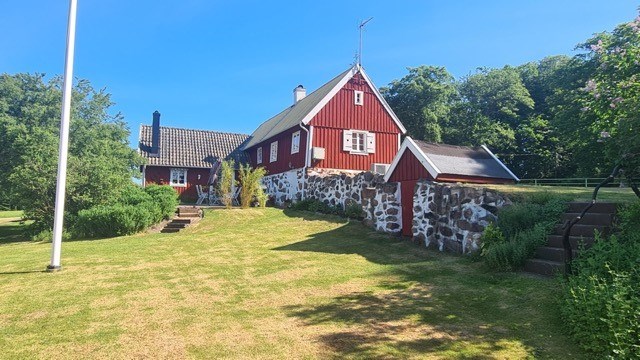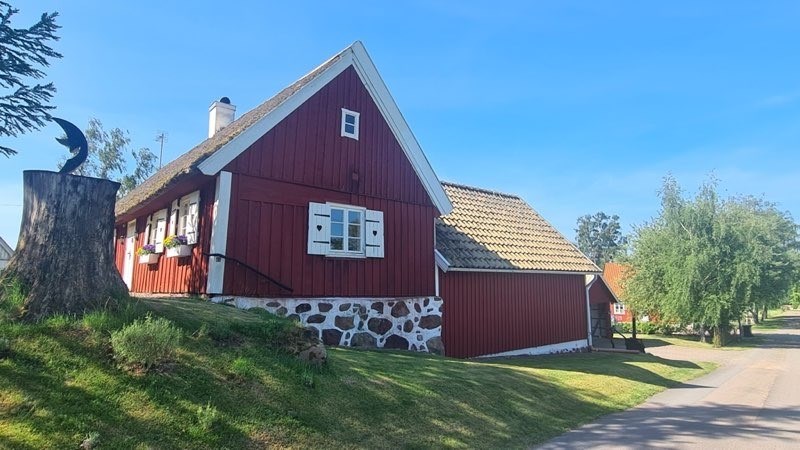GLOBE, NASA, and the Monsignor McClancy Memorial High School in Queens, New York
When students actively participate in scientific investigations that connect to their everyday lives, something powerful happens: they begin to see themselves as scientists. This sense of relevance and ownership can spark a lifelong interest in science, technology, engineering, and math (STEM), paving the way for continued education and even future careers in these fields. Opportunities to engage directly with NASA science—like the one you’ll read about in this story—not only deepen students’ understanding of STEM concepts, but also nourish their curiosity and confidence. With the support of passionate educators, these moments of participation become stepping stones to a future in which students see themselves as contributors to real-world science.
In September 2021, Ms. Deanna Danke, a Monsignor McClancy Memorial High School mathematics teacher in Queens, New York, began teaching her students how to measure tree heights using trigonometry. Soon enough, Ms. Danke discovered the Global Learning and Observations to Benefit the Environment (GLOBE) Observer Trees Tool, and with her 150+ students, began taking tree height observations around the school, an activity that Ms. Danke and her students continue to participate in today. Her and her students’ hundreds of repeat tree height observations have provided student and professional researchers with clusters of measurements that can coincide with measurements made by NASA satellite instruments, allowing for a comparison of datasets that can be analyzed over time.
Due to the consistent tree height data collection resulting from this effort, Ms. Danke was asked to be a co-author on a peer-reviewed research paper that was published on June 21, 2022 in the Environmental Research Letters special journal “Focus on Public Participation in Environmental Research.” The paper, “The potential of citizen science data to complement satellite and airborne lidar tree height measurements: lessons from The GLOBE Program,” included data from the tree height observations reported by Ms. Danke and her students—an incredible achievement for everyone involved.
On March 21, 2025, Ms. Danke’s former and current students continued their inspiring adventures with NASA science by taking a trip to the NASA Wallops Flight Facility in Wallops Island, Virginia. Highlights from this trip included science and technology presentations by personnel from the Ice, Cloud, and land Elevation Satellite-2 (ICESat-2) and Global Precipitation Measurement (GPM) Missions, the Wallops Balloon Program Office, and the Wallops Machine Shop for Fabrication and Testing. The ICESat-2 presentation, in particular, included a discussion on the student-collected tree height data and how the ICESat-2 satellite makes tree height observations from space.
Ms. Danke’s work is a testament to the incredible impact educators can have when they connect classroom learning to authentic scientific discovery. By introducing her students to tools like the GLOBE Observer Trees Tool and facilitating meaningful contributions to NASA science, she opened the door to experiences most students only dream of—from collecting data that supports satellite missions to co-authoring peer-reviewed research and visiting NASA facilities. Stories like this remind us that when students are empowered to be part of real science, the possibilities—for learning, inspiration, and future careers in STEM—are truly limitless.
The GLOBE Observer app, used by Ms. Danke and her students, is made possible by the NASA Earth Science Education Collaborative (NESEC). This free mobile app includes four tools that enable citizen scientists to participate in NASA science: Clouds, Mosquito Habitat Mapper, Land Cover, and Trees. Learn more about ways that you can join and participate in this and other NASA Citizen Science projects. Through these projects, sometimes called ”participatory science” projects, volunteers and amateurs have helped make thousands of important scientific discoveries, and they are open to everyone around the world (no citizenship required).
NESEC is supported by NASA under cooperative agreement award number NNX16AE28A and is part of NASA’s Science Activation Portfolio. Learn more about how Science Activation connects NASA science experts, real content, and experiences with community leaders to do science in ways that activate minds and promote deeper understanding of our world and beyond: https://science.nasa.gov/learn
I know this was an experience they will remember forever and they have already told me that they cannot wait to tell their future children about it. It was wonderful meeting you in person and being on site to get a real sense of what you are working on. The boys were especially fascinated by the last two stops on the tour and appreciated learning a little more about how tree height is measured. Thank you again for this incredible opportunity.”
Ms. Deanna Danke
Monsignor McClancy Memorial High School Läs mer…

